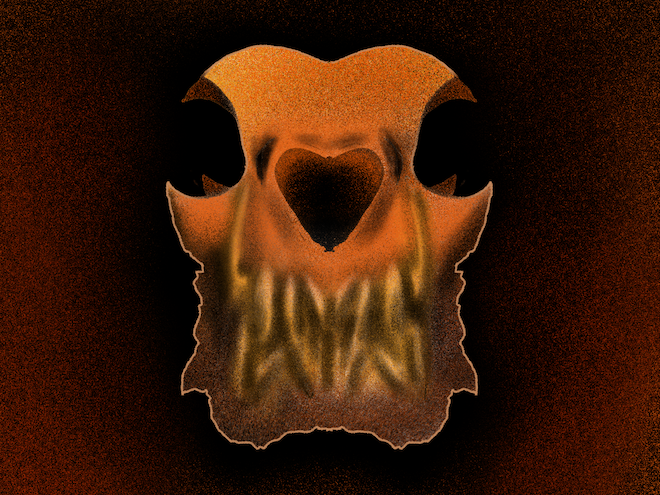Content Warning: this article contains spoilers.
No one leaves unscathed or unstained from “The Devil All The Time,” a new epic drama from director Antonio Campos. The film is based on Donald Ray Pollock’s 2011 novel of the same name and boasts a cast featuring Tom Holland, Robert Pattinson, Bill Skarsgård and Riley Keough.
“The Devil All The Time” opens with a U.S. Marine in the South Pacific during WWII named Willard Russell (Bill Skarsgård), who discovers another Marine nailed to a cross while out on patrol. His body is rotting but still alive, which forces Willard to make the hard choice and shoot him. This act will haunt Willard deeply and constantly, beginning a cycle of violence that will play out like an extended, cinematic murder ballad.
The film takes a few style cues from the Southern Gothic genre. The storyline is mostly, but not completely linear, following a few different groups of characters as their arcs intersect. Whenever two characters cross paths, however, the implication is never warm or friendly, but almost always sinister. In this way the plot structure has more in common with “Pulp Fiction” than “Magnolia.” The film’s sense of time is Faulkneresque, with storylines not only intersecting but repeating themselves in small fragments. Viewers will begin to question their sense of sanity just as the characters do.
The story is set in the border region of southern Ohio and West Virginia. Director Campos offhandedly terms this location as “Midwestern Gothic.” Visually stunning, the film combines painterly, wide shots of the northern Alabama shooting locations with disorienting close-ups. The soundtrack is especially striking, featuring a lush, melodic string section that makes an eerie contrast with the hellish trajectory of the film’s storyline.
American novelist Flannery O’Connor famously described Southern Gothic literature as “Christ-haunted,” characterized by themes of social decay and spiritual pessimism. Director Campos takes that particular quality and turns it on its head. Willard Russell is certainly “Christ-haunted,” but his faith doesn’t lead him to cynicism. If anything, Willard is animated by a dogged optimism bordering on unhinged, which is fueled by his Protestant faith. He comes to see sacrifice, and by extension self-harm, as a form of virtue that will save him from evil.
Willard is not the only character led by delusion. Every character in the film is faced with a pervasive sense of dread. The isolation of the tiny town of Knockemstiff, Ohio, around which most of the events take place, only enhances this dread, and the desaturated cinematography lends it some visual weight.
Yet, there is not a single static character in the film. Some turn to religion, others to con-artistry and some to outright violence, but none wallow in self-pity. The ultimate distinction is between those who embrace faith and hope and those who embrace cynicism, strength and violence. This existential fear produces false preachers, crooked cops and serial killers.
Tom Holland plays the only character who rises above this fear: Willard’s son, Arvin Russell. In doing so, he turns in a career-making performance that will dispel any perception that he should be limited to superhero fare. Arvin rejects devout faith, having seen how his father’s own faith became so easily perverted. He is a fundamentally decent person, but he also possesses a talent for violence. When a few high school boys harass his stepsister Lenora, Arvin silently hunts the boys down, one by one, and beats each one to a pulp. Through Arvin Russell, Holland channels a darkness and a righteous fury not present in any of his prior performances. He is both disturbing and sympathetic.
The film’s timeline is bookended by World War II and Vietnam. In placing the storyline between these two wars, Campos shows the scale of the project he is attempting to achieve. “The Devil All the Time” is a meditation on the nature of violence and how violence inevitably grows and perpetuates itself. But, it is not simply about violence. It is about American violence.
America emerged from World War II as an empire and, from its outset, America’s role as an empire has necessitated the use of violence abroad to maintain power. This violence has shaped the world we live in today, but the focus of “The Devil All The Time” is how American violence has shaped Americans, in particular the men who are tasked with maintaining the U.S. empire.
The acts Willard commits for his country break him, spiritually and mentally. He returns from war, eager to settle down and start a family, only to find that the memories of his actions will never allow him the peace he desperately craves. It becomes slowly clear that violence has robbed Willard of his identity, through PTSD and other traumas, and left him capable of little else besides killing. Like countless other veterans, America’s imperial project has chewed Willard up and spat him out.
This is why Arvin Russell represents the beating heart of the movie. If his father’s arc is marked by a terrible sense of inevitability, his own arc is marked by a hope that he will become someone else. It’s a slim, fragile hope, but it distinguishes the film from pure tragedy and makes it something more.
Email Sam Gray at [email protected].

























































































































































